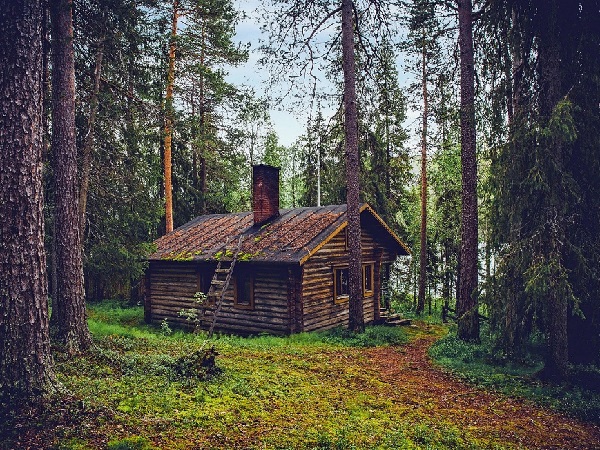A log home offers a beautiful, inviting aesthetic for which to invite guests. The structure itself serves as the design scheme with little needed in the way of interior elements to ‘dress it up.’
A minimalistic approach is typical with this style of home, allowing less time for house cleaning, but what about house maintenance? Is maintaining a log home more arduous than that of a stick-framed house?
As any home would, a property of this sort is going to require routine upkeep. The natural beauty and charm of these houses (go to https://www.mrhandcrafted.com/log-home-gallery/ for gorgeous examples) have their unique tasks to preserve those traits.
It boasts an honor and privilege to own and live in a log cabin where you get to experience nature in all of its glory in a peaceful, serene environment. As such, those who are fortunate enough to acquire one, enjoy caring for it.
Care And Upkeep For Log Homes
Many factors go into the upkeep of these houses, such as where it’s situated, the environment, overall design, and much more. Many times these homes don’t receive the proper care with homeowners lacking adequate information on what exactly it requires.
With the appropriate education and armed with a good plan, little effort, time, or money will need incorporation into your maintenance routine.
1. Caring for your property is not something that has to take a lot of time and effort. Beginning with the design phase and with the proper plans in hand, you have the chance to save on work.
Houses fitted with porches, more massive overhangs, the right landscapes, and foundations that are taller assist in reducing the list of tasks for which you’ll be stuck. The cabin is not a traditional-style house and won’t have the same needs. As long as you understand that going in, you’ll have a plan to suit a less stringent maintenance regimen.
2. A complication is often an association with the work required for one of these properties, and that isn’t necessarily the case. Among the essential basics is cleaning the wood surface along with drying it before the stain application process and after.
With each season, you’ll need to ensure that pollen, mold, dust, and the sort stay off of the logs, particularly the most susceptible walls for the elements which tend to be the west and south. If you find it a complication or too much to handle, hiring a service to take care of the tasks is always an option as opposed to neglecting the duties.
3. The notion that cabins are the only structures ones susceptible to mold issues is a myth. Any surface has this possibility with exposure to moisture and with more dampness comes more mold growth.
An abundance of trees giving shade along with rooflines and backsplashes that drip contributes to the issue. Watch any area that has the least sunlight exposure because it will remain the dampest following a rainstorm. Logs that are kept dry have the potential for a lifetime of endurance.
4. The log house is standing the test of time with advances and transformations, including the use of borate to keep insects from consuming the logs. The termite problems that persisted over the decades succumbed to more of an issue with carpenter bees, though, many are finding options for prevention.
With the use of liquids with ingredients such as cyfluthrin and permethrin or dusts that have boric acid, the bees go away. The holes that they leave behind need a steel wool plug followed by caulking and a finish stain.
5. Reformulation of the stains used over the years from the VOCs of a high volatile organic compound not particularly eco-friendly to reduce the pollutants is positive for homeowners. The design of oil-based stains that are compliant takes a higher level of formulation expertise than would other methods, but this remains to be the technique to hold a viable, strong and environmentally friendly presence.
6. The properties tout as having a problem with cracks which are known as ‘checks’ in the industry. Cracks tend to not be something that a homeowner needs to worry about as these are log material‘s natural characteristics.
If they happen on top of the exterior of a log where there is potential for accumulation of debris or rain and snow, it could cause a problem. The recommendation is to prevent through thorough cleaning and placement of backer rods and caulking. Any new cracks need treating with borate followed by stain and caulk.
7. The misconception is that if you reside in a dry area, you can opt to use less stain. The primary function of a stain on a property is to repel moisture from absorption into the wood and protect the logs from UV ray damage.
When you live in a dry area, there is a lot of sun which can bring wood degradation. The stain pigment aids in this process as do large overhangs and porches. But stain has multiple purposes when you own a home constructed from logs.
Being a homeowner takes a lot of responsibility regardless of which type of house you acquire. Each will come with its own set of maintenance needs unique to itself, and a log home is no exception. The upkeep appears more involved and much more complicated than that of a traditional model. But the process is genuinely just different.
When it comes time to design your new log place, the plan will decide how much work for which you will be responsible. Much thought needs placing into this phase, particularly in selecting the optimum wood for the structure.
Choosing the best wood to build with can save the amount of time spent taking care of the place, the effort in caring for it, and the costs for maintaining the property. Certain woods are insect resistant.
As with any home that you purchase, you have to provide maintenance to get a lifetime of enjoyment from it. And if you’re fortunate enough to own a cabin, you want that longevity.



